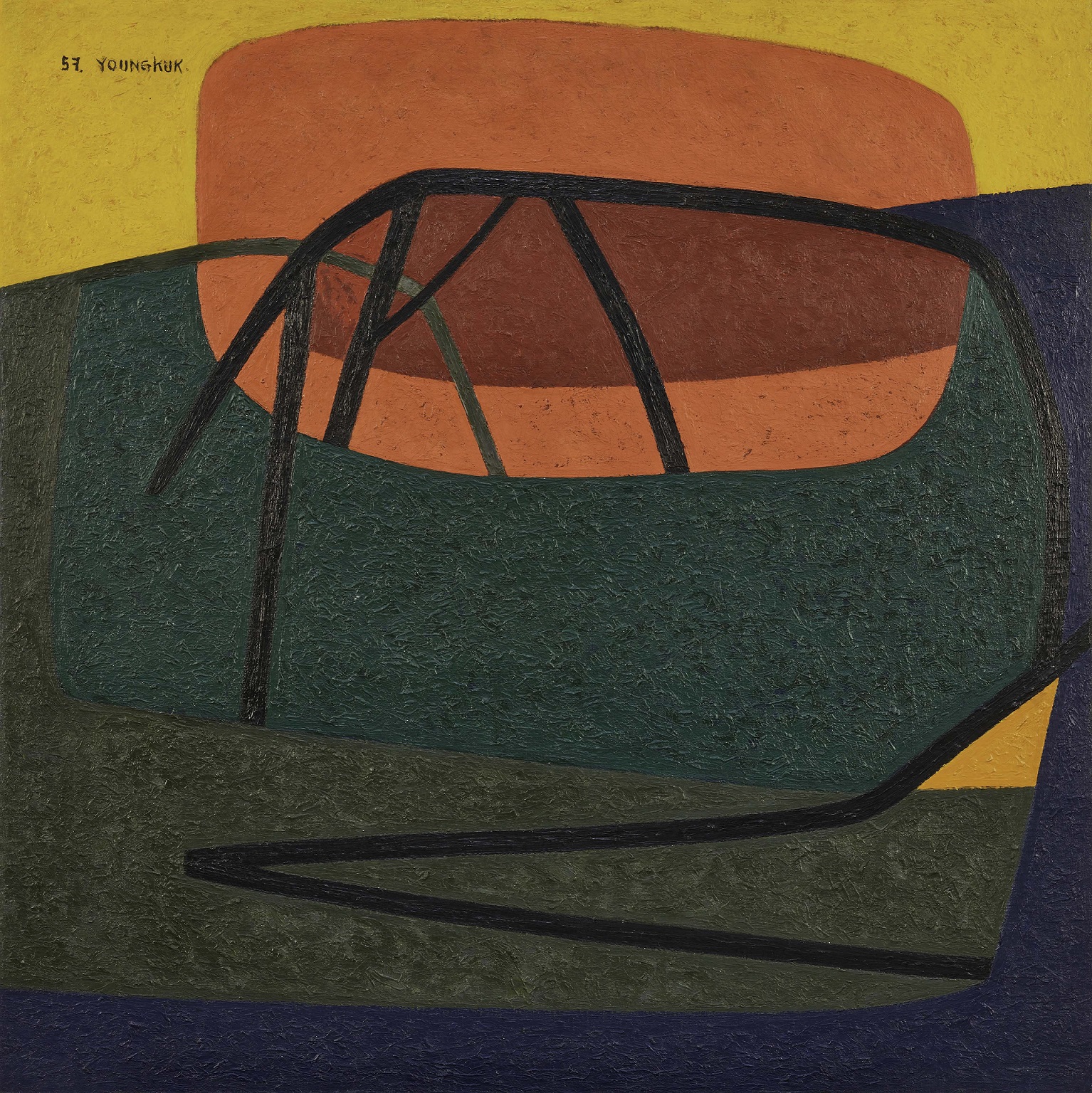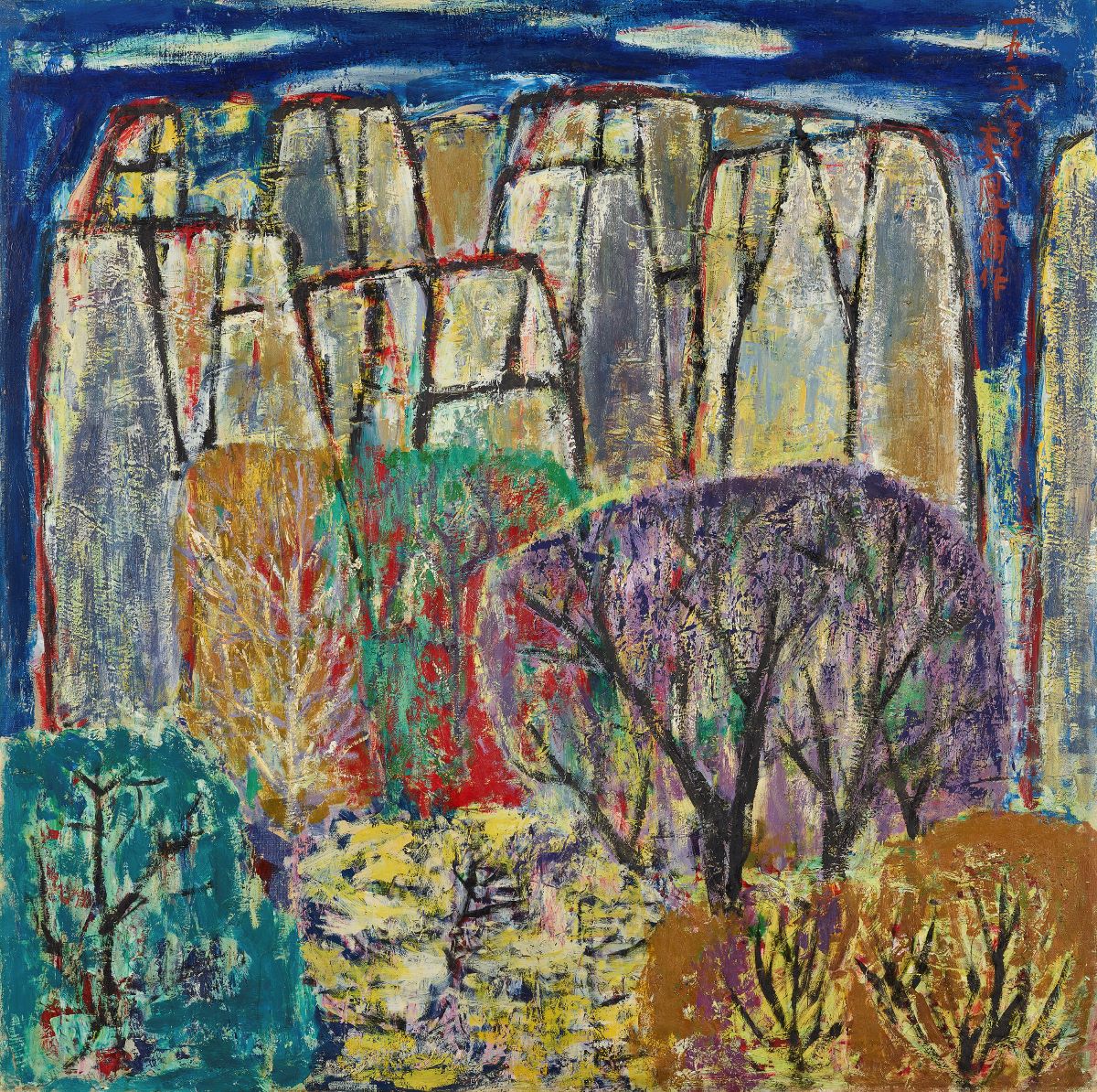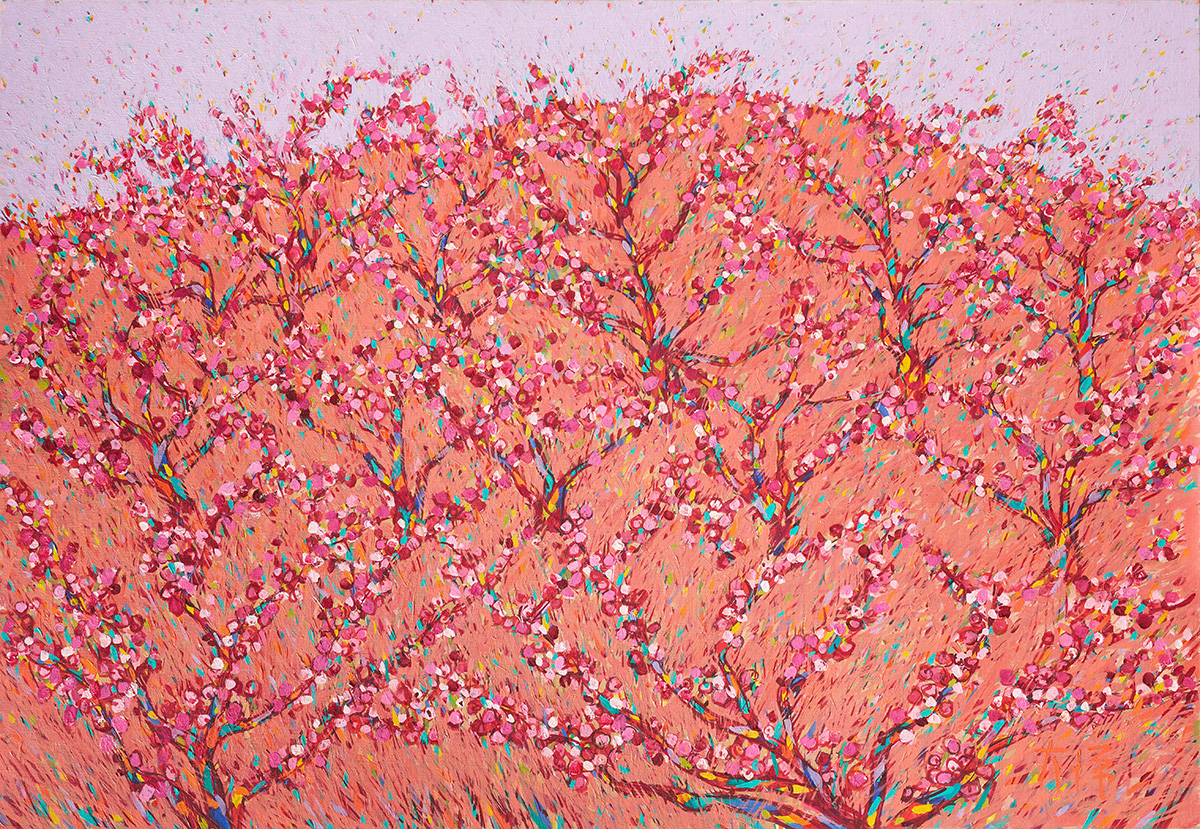
The First Sinsanghoe Exhibition, Leaflet, 1962. MMCA Research Center Collection
Sinsanghoe
* Source: Multilingual Glossary of Korean Art. Korea Arts Management Service
Related
-

Creative Art Association
An art association formed in 1957. The establishment of the association was driven primarily by Western-style artists, and most of the founding members were artists in their thirties who were featured in the National Art Exhibition. The art association promoted a collective modern spirit based on the respective creative approaches of the members, regardless of their genre, academic background, and social connections. The association sought to reform the art community from the inside, and to establish an ideology for common action within the association. In 1960, the association temporarily adopted the abbreviated name Changmijeon, and later changed the name to Changjakmihyeop, before once again becoming the Creative Art Association (Changjak misul hyeophoe).
-

Sinjohyeongpa
The Sinjohyeongpa was a collective co-founded by Kim Kwanhyun, Byon Yeongwon, Byeon Huicheon, Son Gyepung, Lee Sangsoon, Cho Byunghyun, and Hwang Kyubaik, all specialist in the fields of pure art, design, and architecture combined. The group was established in December 1956, and it hoped to emulate the spirit of the Bauhaus movement by “committing to the creative investigation of modern art by inheriting the traditional art of Korea.” They held the first exhibition at the Dong Hwa Gallery from June 27th to July 4th, 1959 and then disbanded the group after their third exhibition at the Korean Information Service Gallery from August 1st to 7th, 1959. On October 13th, 1960, the members of the former Contemporary Fine Artists Alliance [Hyeondae misulga yeonhap], in conjunction with the 1960 Fine Artists Association, the Korean Creator’s Coterie [Changjak donginhoe], and the Hyundae Fine Artists Association [Hyeondae misulga hyeophoe], established a supporting organization for Korean art culture called the Contemporary Fine Artists Alliance [Hyeondae misulga yeonhap].
-

Modern Art Association
The Modern Art Association was an art association established on January 5th, 1957 by several veteran artists. They aimed to establish a wholesome art culture in Korea after a dispute over the 1956 National Art Exhibition (Gukjeon). The five founding members were Lee Kyusang, Park Kosuk, Yoo Youngkuk, Han Mook, and Hwang Yeomsoo. Other artists, including Chung Jeumsik, Lim Wangyu, Chung Kyu, Moon Shin, Kim Gyeong, and Chun Kyungja, joined after the third exhibition. In Sinmisul magazine, they explained that the group “aims to solve the problems of contemporary painting and to maintain independence as the avant-garde of the movement.” They hosted their first exhibition in April 1957, followed by exhibitions in November 1957, June 1958, November 1958, December 1959, and their final exhibition in July 1960. There was a dispute among members regarding participation in the Invitational Exhibition of Contemporary Artists sponsored by Chosun Ilbo in 1959, and the group was disbanded after Han Mook and Moon Shin left for France. The group played a pivotal role in the 1950s Korean art community by advocating for an avant-garde spirit to drive the modern art community.
Find More
-

Yoo Youngkuk
Yoo Youngkuk (1916-2002) was born in Uljin, Gyeongsangbuk-do. He graduated from Uljin Elementary School and attended Gyeongseon Teachers College from 1931 to 1934. He moved to Japan in 1935 and graduated from the Tokyo Culture School in 1938. He submitted his work to the Yanghwa Art Coterie Exhibition and won a grand prize for his radical and avant-garde constructive abstract art in the Free Artists Association Exhibition in 1938. He was then recommended as a new member. After independence, he participated in the New Realism Group Exhibition, the Modern Art Association Exhibition, the 1950 Art Association [Osimnyeon misul hyeophoe] Exhibition, the Contemporary Art Exhibit sponsored by Chosun Ilbo, and Sinsanghoe. He worked as an art professor at Seoul National University from 1948 to 1950 and at Hongik University from 1966 to 1970. He was one of the first abstract artists in Korea. While in Japan he pursued the creation of an absolute form of abstraction. Then, back in Korea after independence, he switched to using constructive and emotional color in his abstract compositions to represent the sublime character of nature.
-

Lee Bongsang
Lee Bongsang (1916-1970, pen name Seokjeong) graduated from the Training Department at Gyeongseong Normal School in 1937. Self-taught in painting, Lee received his first honorable mention at the eighth Joseon Art Exhibition [Joseon misul jeollamhoe] in 1929 at the age of thirteen. He went on to receive honorable mentions and win special prizes, coming to prominence as a painter. He later moved to Japan and during his stay there his work was selected for the Ministry of Education Art Exhibition [Monbusho bijutsu tenrankai]. In 1942, together with Japanese artists active in Seoul, he founded the artist group named Changnyongsa. After Korea’s liberation from Japan, Lee participated in the founding of several artists’ groups, such as the 1950 Art Association, Gijojeon, Sinsanghoe, and Gusanghoe. He was also at the forefront of fostering later generations through the compilation of textbooks and criticism. His early works reflected impressionist realism. In the 1950s, however, he turned to a painting style characterized by bold compositions, bright colors, and a rough brushwork, which he developed through his association with Kim Whanki, Yoo Youngkuk, Kim Byungki, and Park Kosuk. From 1953 he worked as a professor at Hongik University, and from the year 1954 he was invited to participate in the National Art Exhibition (Gukjeon) as a recommended artist, invited artist, and judge.
-

Lee Daiwon
Lee Daiwon (1921-2005, pen name Yikyung) was born in Paju, Gyeonggi-do, as the third son of wealthy parents He learnt oil painting through private lesson when he was a child at Cheongwoon Public Elementary School and proved his potential when he won an award at the art contest hosted by the Dong-A Ilbo. He was a member of an art club and strongly supported by his Art teacher Sato Kunio at Kyungbok Public High School. His potential was realized when he was consecutively selected for the Joseon Art Exhibition [Joseon misul jeollamhoe] in 1938, 1939, and 1940. However, due to his father’s disapproval, he was compelled to study law at Keijo Imperial University instead of pursuing art. After Korean independence, he returned to actively engaged with art activities, such as running Bando Gallery, the first commercial art gallery, in 1959. He also served as an art professor from 1967 to 1986 and a dean from 1972 to 1974 at Hongik University. He was later appointed as a chair of the National Academy of Arts in 1989 and 1993. He drew cheerful and colorful scenes of farms in bright colors based on pointillist Impressionism in combination with traditional Eastern painting techniques.






